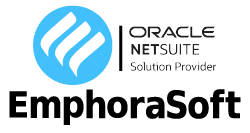
ERP Change Management: Best Practices for Seamless Organizational Transformation
In today’s rapidly evolving business landscape, Enterprise Resource Planning (ERP) systems have become the backbone of organizational operations. These comprehensive solutions integrate various business processes and functions into a unified platform, enabling streamlined operations, enhanced decision-making, and improved efficiency. However, implementing or upgrading an ERP system is not merely a technological endeavor—it represents a fundamental transformation in how an organization operates, collaborates, and achieves its objectives.
The journey toward ERP implementation or transformation is fraught with challenges. Studies consistently show that a significant percentage of ERP projects either fail to meet expectations or exceed budgets and timelines. The root cause? More often than not, it’s inadequate change management.
This comprehensive guide explores the intricate landscape of ERP change management, offering insights, strategies, and best practices to navigate the complexities of organizational transformation successfully. Whether you’re planning a new ERP implementation, upgrading an existing system, or undergoing a complete digital transformation, the principles and approaches outlined here will serve as a roadmap for success.
Understanding ERP Change Management
The Critical Role of Change Management in ERP Projects
Change management in the context of ERP implementation goes far beyond technical considerations. It encompasses the strategies, processes, and tools that help organizations transition from their current state to a desired future state. This transition involves not just systems and processes but also people, culture, and organizational structure.
Effective ERP change management addresses several key dimensions:
- People: Preparing employees for change, addressing resistance, and facilitating adoption
- Process: Redefining business processes to align with ERP capabilities and organizational goals
- Technology: Ensuring smooth technical implementation and integration
- Structure: Aligning organizational structures with new processes and systems
- Culture: Fostering a culture that embraces change and continuous improvement
Without a robust change management strategy, even the most technically sound ERP implementation can fail to deliver expected benefits. In fact, research indicates that projects with excellent change management are six times more likely to meet objectives than those with poor change management.
Common Challenges in ERP Transformation
Before diving into best practices, it’s essential to understand the common challenges organizations face during ERP transformations:
- Resistance to change: Employees often resist new systems and processes due to fear of the unknown, comfort with existing methods, or concerns about job security.
- Complexity and scope: ERP implementations typically affect multiple departments and processes, creating a complex web of interdependencies.
- Resource constraints: Limited budget, time, and skilled personnel can hamper implementation efforts.
- Misalignment of expectations: Stakeholders may have different expectations regarding the ERP system’s capabilities and benefits.
- Legacy systems and data: Migrating from legacy systems and ensuring data quality can be technically challenging.
- Inadequate training: Insufficient training can lead to poor adoption and utilization of the new system.
- Leadership commitment: Without visible support from leadership, ERP projects may lose momentum and priority.
- Communication gaps: Poor communication can lead to misunderstandings, resistance, and misalignment.
Understanding these challenges is the first step toward developing a comprehensive change management strategy that addresses potential roadblocks proactively.
Best Practices for ERP Change Management
1. Start with a Clear Vision and Strategy
Successful ERP transformations begin with a clear vision that articulates why the change is necessary and how it aligns with organizational objectives. This vision should:
- Define the business case: Clearly articulate the benefits and ROI of the ERP implementation
- Set measurable objectives: Establish specific, measurable goals for the transformation
- Create a compelling narrative: Develop a story that resonates with stakeholders and makes the case for change
- Align with organizational strategy: Ensure the ERP transformation supports broader organizational goals
A well-defined vision serves as the North Star for the entire project, guiding decisions, priorities, and communication throughout the implementation journey.
2. Secure Executive Sponsorship and Leadership Alignment
Executive sponsorship is consistently cited as the most significant factor in successful change management. For ERP implementations, securing active and visible leadership support is non-negotiable. This involves:
- Identifying an executive sponsor: Choose a respected leader with authority to make decisions and allocate resources
- Creating a leadership coalition: Ensure alignment among key leaders across departments
- Establishing clear governance: Define decision-making structures and escalation paths
- Demonstrating visible support: Leaders should visibly champion the change through communications and actions
Leaders must not just verbally endorse the ERP transformation but actively participate in the journey, demonstrating their commitment through consistent messaging and behavior.
3. Build a Dedicated Change Management Team
Establishing a dedicated change management team with clear roles and responsibilities is critical for coordinating transformation efforts. This team should:
- Include representatives from various departments: Ensure diverse perspectives are represented
- Possess both business and technical expertise: Balance understanding of business processes with technical knowledge
- Develop specialized change management skills: Provide training in change management methodologies
- Work closely with the technical implementation team: Ensure alignment between technical and change management activities
The change management team acts as the bridge between the technical implementation and the organizational readiness aspects of the ERP transformation.
4. Conduct Thorough Stakeholder Analysis and Engagement
Understanding and engaging stakeholders is foundational to effective change management. This involves:
- Identifying all stakeholder groups: Map out everyone affected by the ERP transformation
- Assessing impact on each group: Understand how the change will affect each stakeholder segment
- Analyzing readiness and resistance: Gauge the readiness for change and potential sources of resistance
- Developing tailored engagement strategies: Create specific approaches for different stakeholder groups
- Establishing feedback mechanisms: Provide channels for stakeholders to share concerns and suggestions
Stakeholder engagement should be ongoing throughout the ERP transformation journey, with strategies evolving based on feedback and changing circumstances.
5. Develop a Comprehensive Communication Plan
Communication is the lifeline of change management. A robust communication plan for ERP transformation should:
- Tailor messages to different audiences: Customize content based on stakeholder needs and interests
- Use multiple channels: Leverage various communication methods (meetings, emails, intranet, etc.)
- Maintain consistent messaging: Ensure alignment across all communications
- Establish regular cadence: Provide updates predictably and frequently
- Address the “what’s in it for me” question: Clarify benefits for individual stakeholders
- Create two-way communication: Enable dialogue rather than one-way messaging
- Celebrate milestones and successes: Recognize achievements to maintain momentum
Effective communication reduces uncertainty, builds trust, and helps stakeholders understand their role in the transformation journey.
6. Redesign Business Processes Before Technology Implementation
One of the most common pitfalls in ERP implementations is attempting to fit new technology into existing processes. Instead, organizations should:
- Map current processes: Document existing workflows and identify pain points
- Define future-state processes: Design optimized processes aligned with organizational goals
- Identify gaps: Determine changes needed to transition from current to future state
- Make deliberate configuration choices: Configure the ERP system to support redesigned processes
- Avoid unnecessary customization: Customize only when absolutely necessary for competitive advantage
This “process-first” approach ensures that the organization realizes the full potential of the ERP system rather than simply digitizing inefficient processes.
7. Invest in Comprehensive Training and Education
Training is often underestimated in ERP implementations, yet it’s critical for successful adoption. Best practices include:
- Developing role-based training: Tailor training to specific job functions and responsibilities
- Using multiple learning modalities: Offer a mix of instructor-led, online, and hands-on training
- Creating a learning journey: Provide training at the right time, not too early or too late
- Developing super users: Train power users who can support others in their departments
- Offering refresher sessions: Provide ongoing learning opportunities after go-live
- Creating accessible reference materials: Develop job aids, quick reference guides, and knowledge bases
- Measuring training effectiveness: Assess understanding and adjust training approaches as needed
Training should focus not just on how to use the system but also on why processes are changing and how they connect to the bigger picture.
8. Manage Resistance Proactively
Resistance to change is natural and should be anticipated in any ERP transformation. Effective resistance management involves:
- Identifying potential sources of resistance: Understand concerns and objections in advance
- Addressing concerns openly: Create safe spaces for dialogue about fears and reservations
- Involving resistors in the process: Engage potential resistors in solution development
- Emphasizing benefits: Clearly articulate how changes will address pain points
- Providing support mechanisms: Offer resources and assistance during the transition
- Monitoring adoption: Track usage patterns to identify areas of resistance
- Adjusting approaches based on feedback: Be willing to modify implementation aspects when legitimate concerns arise
By treating resistance as valuable feedback rather than opposition, organizations can strengthen their implementation approach and increase buy-in.
9. Implement Robust Data Migration and Integration Strategies
Data quality and integration are critical to ERP success. Best practices include:
- Conducting data audits: Assess current data quality and identify issues
- Establishing data governance: Define standards, ownership, and processes for data management
- Cleaning data before migration: Fix quality issues proactively
- Planning phased data migration: Move data in logical, manageable chunks
- Testing thoroughly: Validate data post-migration for accuracy and completeness
- Documenting integration points: Map all connections between systems
- Establishing ongoing data quality processes: Create mechanisms to maintain data integrity
Poor data quality can undermine even the most well-executed ERP implementation, making this an essential component of change management.
10. Plan for Go-Live and Post-Implementation Support
The transition to the new ERP system requires careful planning and support:
- Creating a detailed cutover plan: Document step-by-step transition process
- Developing contingency plans: Prepare for potential issues during go-live
- Establishing a command center: Create a central hub for issue resolution
- Providing enhanced support: Increase support resources during the transition period
- Monitoring system performance: Track technical metrics and user experience
- Addressing issues quickly: Establish processes for rapid problem resolution
- Gathering feedback: Collect user input on system performance and usability
The immediate post-go-live period is critical for building confidence in the new system and ensuring sustained adoption.
11. Measure Success and Continuously Improve
After implementation, organizations should establish mechanisms to:
- Track key performance indicators: Measure improvements in business outcomes
- Monitor user adoption: Track system usage patterns
- Assess process compliance: Ensure new processes are being followed
- Identify optimization opportunities: Look for ways to enhance system utilization
- Capture lessons learned: Document insights for future projects
- Celebrate successes: Recognize achievements and progress
- Plan for continuous improvement: Develop a roadmap for ongoing enhancements
ERP implementation is not a one-time event but the beginning of an ongoing journey of optimization and improvement.
ERP Transformation Roadmap: A Phased Approach
Implementing these best practices requires a structured approach. Below is a phased roadmap for ERP change management:
Phase 1: Assessment and Planning (3-6 months before implementation)
- Conduct organizational readiness assessment
- Develop change management strategy and plan
- Establish governance structure
- Form change management team
- Complete stakeholder analysis
- Begin executive alignment activities
Phase 2: Preparation (1-3 months before implementation)
- Develop detailed communication plan
- Create training strategy and materials
- Begin awareness communications
- Engage key stakeholders in process redesign
- Develop change agent network
- Prepare data migration strategy
Phase 3: Implementation (During technical implementation)
- Execute communications according to plan
- Deliver training programs
- Manage resistance actively
- Prepare for go-live (cutover planning)
- Conduct readiness assessments
- Adjust approach based on feedback
Phase 4: Go-Live and Stabilization (0-3 months after go-live)
- Provide enhanced support
- Monitor adoption and performance
- Address issues quickly
- Reinforce training as needed
- Celebrate early wins
- Gather feedback for improvements
Phase 5: Continuous Improvement (Ongoing)
- Measure benefits realization
- Identify optimization opportunities
- Implement enhancements
- Maintain communication about improvements
- Provide advanced training
- Document lessons learned
This phased approach ensures that change management activities align with the technical implementation timeline while providing sufficient lead time for organizational preparation.
Case Study: Manufacturing Company Achieves Seamless ERP Transformation
Consider the example of a mid-sized manufacturing company that successfully implemented a new ERP system to replace its legacy applications. Key to their success was a comprehensive change management approach:
Challenge: The company needed to replace multiple disconnected systems with an integrated ERP solution while minimizing disruption to operations.
Approach:
- Formed a cross-functional change management team six months before implementation
- Conducted detailed impact assessments for all departments
- Created a network of “change champions” in each department
- Developed a comprehensive communication campaign theme: “Connected for Growth”
- Implemented role-based training with hands-on simulation environments
- Established a “command center” during go-live with representatives from all departments
- Provided enhanced support for 90 days post-implementation
Results:
- 92% of users proficient in the system within two weeks of go-live
- Minimal disruption to customer orders during transition
- 30% reduction in order processing time within three months
- 25% improvement in inventory accuracy
- Positive user feedback on system usability
This case illustrates how a systematic approach to change management can facilitate a smooth transition while accelerating the realization of benefits.
The Role of Technology in ERP Change Management
While the focus of this article has been on the human and process aspects of change management, technology itself can support the change management process:
Digital Adoption Platforms
Digital adoption platforms provide in-application guidance, helping users navigate the new ERP system with contextual help and tutorials. These tools can:
- Offer step-by-step guidance for complex processes
- Provide contextual help when users encounter difficulties
- Track usage patterns to identify adoption challenges
- Reduce the learning curve for new users
Change Management Software
Specialized change management software can help organizations:
- Track stakeholder engagement activities
- Manage communications across multiple channels
- Monitor training completion and proficiency
- Measure adoption metrics and identify issues
- Document and address resistance
Collaboration Tools
Collaboration platforms facilitate:
- Knowledge sharing among implementation team members
- Documentation of process changes and decisions
- Communication across distributed teams
- Collection of feedback from users
- Creation of user communities for peer support
Leveraging these technologies can enhance the effectiveness of change management efforts while providing valuable data on adoption progress.
The Future of ERP Change Management
As organizations and technologies evolve, ERP change management practices are also evolving. Several trends are shaping the future:
Continuous Transformation vs. One-Time Implementation
With cloud-based ERP systems enabling more frequent updates, organizations are shifting from viewing ERP implementation as a one-time event to embracing continuous transformation. This requires:
- Establishing permanent change management capabilities
- Creating a culture of adaptability
- Developing agile approaches to process changes
- Building continuous learning into organizational practices
Increased Focus on User Experience
User experience is becoming central to ERP adoption, with organizations:
- Involving users earlier in design decisions
- Customizing interfaces for different user groups
- Implementing mobile access for flexibility
- Measuring and optimizing user experience continuously
Data-Driven Change Management
Change management itself is becoming more data-driven, with organizations:
- Using analytics to predict resistance
- Personalizing change interventions based on adoption data
- Measuring the ROI of change management activities
- Optimizing communication and training based on response data
Integration with Digital Transformation
ERP implementations are increasingly part of broader digital transformation initiatives, requiring:
- Alignment with overall digital strategy
- Coordination across multiple technology initiatives
- Focus on business model innovation, not just process improvement
- Consideration of emerging technologies like AI and IoT
Organizations that adapt their change management approaches to these trends will be better positioned to realize the full benefits of their ERP investments.
Conclusion: The Human Side of ERP Success
While ERP implementations are often viewed primarily as technology projects, their success ultimately hinges on human factors. Technology can be purchased and installed, but organizational transformation requires changes in behavior, mindset, and culture.
Effective change management is the bridge that connects technical implementation with actual business value. By following the best practices outlined in this guide, organizations can:
- Reduce resistance and accelerate adoption
- Minimize disruption during implementation
- Increase the likelihood of meeting project objectives
- Accelerate the realization of benefits
- Build organizational capabilities for ongoing change
The journey toward ERP transformation is challenging, but with thoughtful planning, committed leadership, and a people-centered approach, organizations can achieve the seamless transformation they envision.
In an era of continuous technological change, the ability to manage ERP-related organizational transformations effectively isn’t just a one-time need—it’s becoming a core organizational capability that provides lasting competitive advantage. By investing in robust change management practices, organizations position themselves not just for successful ERP implementation but for sustained agility in a rapidly evolving business landscape.
FAQ's
ERP change management involves the strategies, processes, and tools that facilitate the transition from current organizational practices to new ones enabled by the ERP system. It's crucial because it addresses not only the technical aspects but also the people, processes, and cultural shifts required for successful ERP implementation. Effective change management ensures that employees adopt the new system, leading to improved efficiency and achievement of organizational goals.
Organizations often encounter challenges such as resistance to change, complexity and scope issues, resource constraints, misalignment of expectations, legacy systems and data migration difficulties, inadequate training, lack of leadership commitment, and communication gaps. Recognizing these challenges early allows for proactive strategies to mitigate them.
Overcoming resistance involves understanding the root causes, such as fear of the unknown or concerns about job security. Strategies include open communication about the benefits of the ERP system, involving employees in the planning process, providing comprehensive training, addressing concerns empathetically, and highlighting how the change aligns with personal and organizational goals.
Leadership plays a pivotal role by providing clear vision, securing executive sponsorship, and demonstrating commitment to the ERP project. Leaders should actively participate, allocate necessary resources, and maintain alignment among departments to drive the transformation effectively.
Stakeholder engagement ensures that the perspectives and needs of all affected parties are considered. By conducting thorough stakeholder analysis and maintaining ongoing communication, organizations can tailor strategies to address specific concerns, foster buy-in, and facilitate smoother adoption of the ERP system.
Training is vital for successful ERP adoption. Comprehensive, role-based training programs that utilize various learning modalities prepare employees to use the new system effectively. Ongoing support and refresher sessions help maintain proficiency and address any challenges that arise post-implementation.
Data migration involves moving, copying, and restructuring data from existing systems to the new ERP system. It's critical because accurate and clean data is essential for the ERP system to function correctly. Proper planning, data auditing, and testing are necessary to ensure data integrity during the transition.
Before implementing the ERP system, it's essential to map current processes, identify inefficiencies, and design optimized workflows that align with organizational goals. This process-first approach ensures that the ERP system enhances productivity rather than replicating existing inefficiencies.
Developing a comprehensive communication plan that tailors messages to different audiences, utilizes multiple channels, maintains consistent messaging, and establishes regular updates is crucial. Two-way communication channels allow for feedback, addressing concerns promptly, and keeping stakeholders informed and engaged.
Success can be measured by tracking key performance indicators (KPIs) such as system adoption rates, process efficiency improvements, user satisfaction, and the realization of anticipated benefits. Continuous monitoring and feedback collection enable organizations to identify areas for improvement and ensure the ERP system delivers the expected value.







